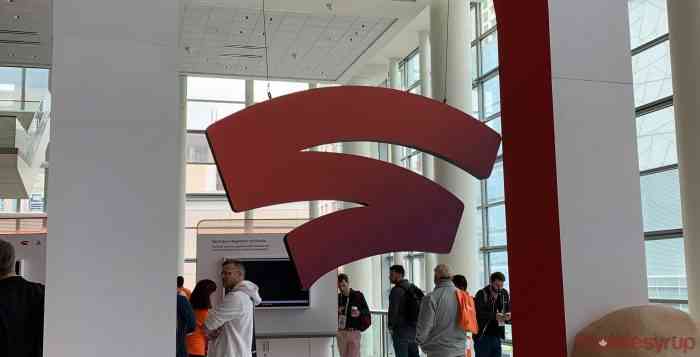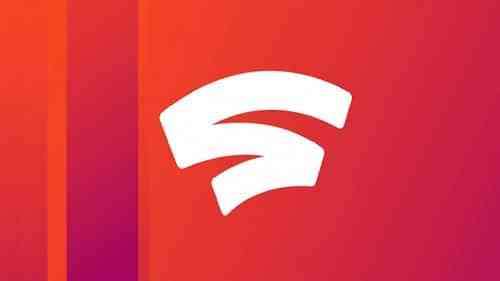Google Stadia Review
Google Stadia, the company’s newest flagship gaming platform, is a bit of a strange product to review. Mostly, this is because Stadia isn’t exactly a product but rather an ongoing game streaming service that uses specific hardware as a point of access. Some believe streaming is the future of gaming, but others argue there are still too many kinks that need to be ironed out. Google hopes to usher in this new era of game streaming with Stadia, and at a fundamental level, the technology is a success. However, due to an unappealing pricing model, and a distinct lack of features, Google Stadia is off to a rocky start.
Let’s begin by talking about what Stadia does on a basic level. Stadia is a cloud gaming service run by Google and made possible through the company’s already substantial infrastructure. When you boot up a game on Stadia, it is run through hardware on Google’s end and is delivered to you via the cloud on the device of your choosing. The first question most people ask is how this process is done without a significant amount of lag or latency, and surprisingly, Google has done a fairly good job of mitigating this. You definitely won’t have the low latency of a traditional PC connected to ethernet, but it’s also not significant enough where it hindered my ability to play a game, whether single player or online multiplayer. My Wi-Fi speeds clock in around 80mbps and it was plenty to run Stadia at maximum fidelity without any major hiccups. That being said, I encountered more issues playing on a web browser, including some stuttering and occasional freezing that lasted up to a few seconds, but it was infrequent enough that I wasn’t too troubled by it. As of now, though, playing on a 4K TV with Chromecast seems to be the ideal way to play.
All you technically need to play Stadia on a TV is a decently good internet connection and a Chromecast Ultra, but one of Stadia’s largest selling points is the ability to play games on nearly any device that can open a Chrome web browser, regardless of that device’s specifications. Unfortunately, only Pixel phones are supported for playing on mobile but hopefully that will change in the near future.

Okay, so Stadia functions well enough but how do the games actually look? Well, it’s a bit complicated. Graphically, Stadia promises 4K resolution at 60fps if you meet the internet speed requirement, but most of the time it doesn’t actually deliver that. Many games are only upscaled to 4K from 1080p and though I had a smooth 60fps with some games, others appeared to run at or around 30fps. Besides that, the games I was able to test out looked mostly great. Assassin’s Creed Odyssey’s open world looks vibrant and full of detail, and Trials Rising impresses with its varied and spectacular courses. I was also able to try Just Dance 2020 and Destiny 2 and had a good experience with both of them. Again, the experience is not quite on par with a dedicated gaming PC, but there is a graphical improvement over consoles. it’s a shame, though, that Stadia doesn’t give you the option to control your graphically settings in any meaningful way.
Thankfully, there is a menu that allows you to choose between streaming at highest quality, balanced, and low data usage, but compared to the freedom you get to modify graphics settings on a PC this is pretty disappointing. Still, I am glad Stadia allows you to limit the data usage because streaming at 4K will devour your data incredibly fast. If you are living with a data cap like me, this is hugely important. But this creates a rather troubling conundrum where it disincentivizes purchasing a Stadia Pro membership if you don’t have unlimited data.
Worth It?
This leads me into another major issue with Stadia: it’s pricing model. The upfront cost seems reasonable and for approximately $130 you get the Founder’s edition, which includes a Stadia controller, a Chromecast Ultra, and three months of Stadia Pro for free that will cost $10 per month afterwards. $10 a month is a steep price to pay to be able to play games on their highest settings, and the pro membership simply doesn’t offer enough extra incentives to warrant its high cost. This doesn’t even account for how much money you’ll still need to shell out to purchase the games you want to play, most of which are full retail price. The Stadia controller is one of the high notes of the whole package, with a sleek, modern design, a decent button layout and more tactile feeling vibrations than a DualShock. Sadly, the controller can only be used wirelessly with a Chromecast as of now, but Google has promised that won’t be the case for long.
Speaking of things Google has promised that aren’t present, there are numerous features completely missing from Stadia’s launch, some of which are baffling. At launch, Stadia has no achievement system, account sharing, and is incapable of being used with Chromecast hardware that did not ship with Stadia itself. On top of that, some of the more exciting features Google has touted such as Crowd Play, State Share, and Stream Connect won’t be released until 2020. All of this causes Stadia to feel like a beta in its current form and it’s disappointing to say the least.

Even the mobile app, which is used to launch and purchase games, is overly simplistic and missing functions you’d expect. For example, when I first received my Stadia and went to the app to redeem review codes, I could not find any screen or menu to do so. This seemed odd to me, so I reached out to Stadia’s customer support and even the employee I spoke to had no idea where to redeem codes at first. After some time, he discovered I needed to access my account from a web browser and go into my settings to accomplish this, but the fact a Google employee was stumped regarding a basic customer service question is cause for concern. Not only that, it serves as a testament to the haphazard design of the user interface and app as a whole.
When I first saw Google Stadia in action during its reveal, I was highly impressed. Now, after being one of its first adopters, I wish I could say this is still true. Unfortunately, like a shimmering geode trapped in an ugly and seemingly impenetrable outer shell, Stadia is an underdeveloped product with a strong concept at its core. Playing games on Stadia is surprisingly good most of the time, but nearly everything surrounding that experience, from the unreasonable pricing model to the oversimplified companion app and UI, is flawed. I still have hope Stadia can become something great given time and proper investment from Google, but as of now, the cost simply isn’t worth it.
The Good
- The tech works!
- Sleek controller
- PC-level gaming on (almost) any screen
The Bad
- Feels like a beta
- Missing tons of features
- Unappealing pricing model

